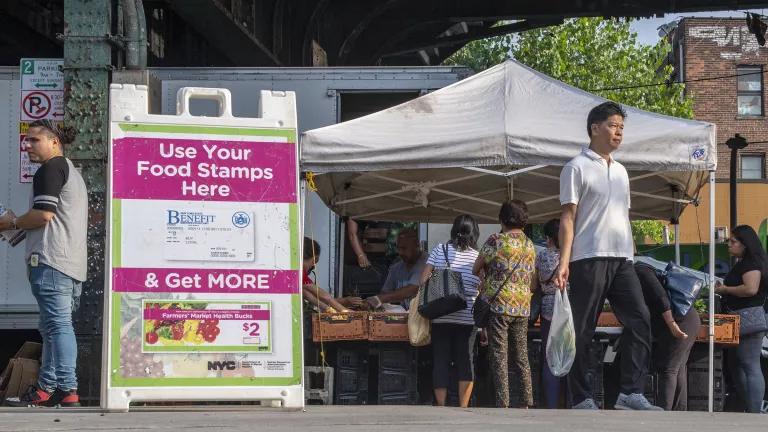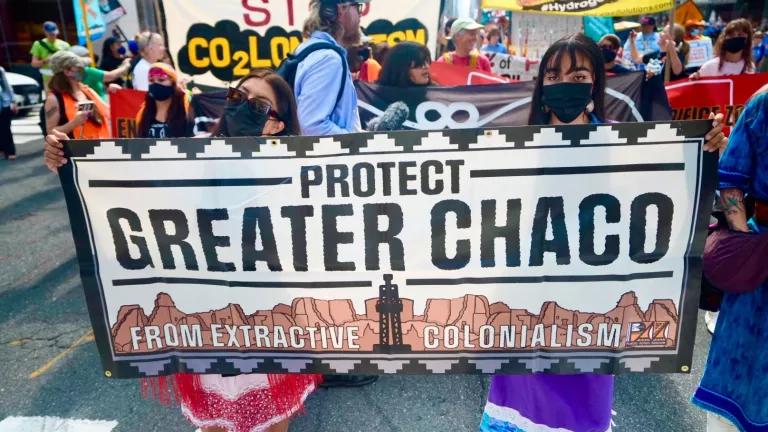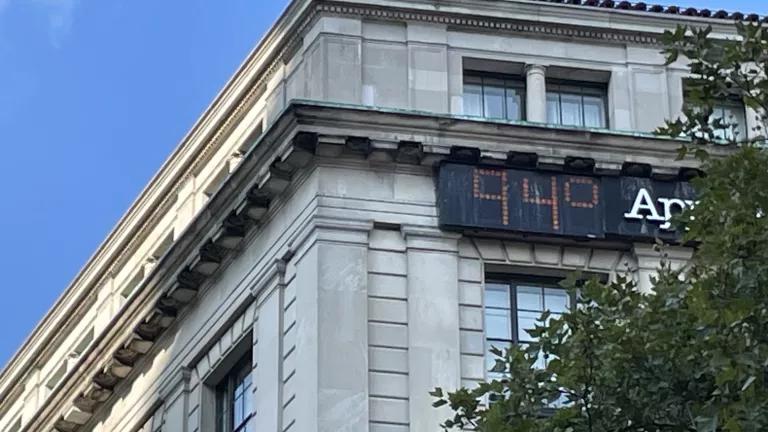Juneteenth Reflections on Climate Justice
Honoring Juneteenth requires us to apply commitment and creativity to directing today's unprecedented federal investments toward repairing past harms.
On June 19, 1865, American Union soldiers liberated the last Black Americans enslaved in Texas. Since 1866, the day has been a commemoration of the emancipation of millions of Black Americans who suffered immeasurably under the chattel economy. Though freedom was authored into law, those for whom it was written were the last to know. This fact is a stark reminder of the realities of legal justice - there are often substantive gaps between the intention of the law and actually changing lives.

Celebrating the legacy of Juneteenth- Photo credit Tasha Jolley
Climate justice is directly linked to racial justice
Racial and ethnic minorities and lower-income groups in the United States face higher risk of premature death due to greater exposure to dangerous fine particulate air pollution (PM2.5); recovery efforts from natural disasters concentrate wealth in white neighborhoods and away from communities of color; Black Americans are 75 percent more likely than non-Black Americans to live within close proximity to waste facilities or within fence-lined communities. Segregation and legacy pollution do not occur by happenstance. Generational cycles of extractive and predatory behaviors - facilitating higher exposure to mobile pollution, enacting racialized land zoning practices, siting industrial and waste facilities away from wealthy, white communities, sustaining exclusionary financial practices - have led to measurable differences in climate burden across communities.
In 2023, our nation and world are facing the existential threats of climate change. As East Coasters eyes burned with wildfire smoke in early June, we felt the disruptive and dangerous impacts of the fossil fuel based economy. Those with means sheltered indoors, impossible for those living in unsubstantial or poorly insulated housing, the housing insecure and essential workers with outdoors jobs. Critically, communities of color face severe and disparate risks - being more likely to face pollution burdens and associated chronic conditions such as asthma, and more likely to live in substandard housing. There is an urgent need for adaptation in service of a sustainable and generative future that acknowledges these realities, legacy circumstances, and already apparent burdens of the climate crisis.
An unprecedented era of climate investments
Major federal legislation, including the American Rescue Plan Act ($360 billion for states and local communities), the Infrastructure Investment and Jobs Act ($550 billion in new spending), and the Inflation Reduction Act ($369 billion in climate and energy-related programs), have ushered in a new era. The federal climate and infrastructure laws offer the promise to direct major investments in energy, transportation and buildings with funds targeted to low-income and historically disenfranchised communities. Commitments like Justice40, which directs 40 percent of the benefits of many of the funded programs to these communities, are critical. Yet as history teaches us, such commitments are only the first step towards actionable change. It is the job of every individual and organization that engages with these federal funds to ensure the spirit of the legislation and programming is central in implementation. Massive investments in infrastructure must also right historical wrongs - addressing the longstanding impacts of redlining, pollution exposure, and lack of access to capital for safe housing.
Righting historical wrongs through intentional program design
NRDC is engaging in this reimagination through intentional community involvement in program design. Access to funding and programming alone is not sufficient for tangible change; from inception to implementation, rollout must include pathways to target benefits towards those most at-risk and with fewest resources. Critical federal program requirements center communities, such as the community benefits component of Department of Energy grants, the meaningful engagement requirement for EPA’s Climate Pollution Reduction grants, and the Environmental Justice and Climate Justice technical assistance centers, together will make billions in grants open to community-based organizations.
States and city governments must be intentional and creative in designing strategies to reach key populations, considering every user and their unique needs. For example, by leveraging existing service networks and cross-honoring income qualification at the state and local levels and investing program capacity to ensure that households and communities who are in need of resources receive them. Considering the example of upgrading homes for energy efficiency, in communities that have long been the target of predatory lending, governments must work to build trust when promoting energy efficiency and solar programs. They can do this by partnering directly with existing community organizations, uplifting youth leaders, and trusted local networks.
Programs can also function to close gaps. For example, homes in disrepair were previously unable to access funding for cost-saving energy efficiency upgrades, including insulation upgrades, HVAC system updates, and the installation of better-performing appliances. The Department of Energy’s new “weatherization readiness” pilot program fund takes a step to close this gap, enabling low-income homeowners in need of major structural repairs to access resources for this and efficiency upgrades, forever lowering monthly energy bills. Leaders in local and state government, like Minnesota, created programs to meet housing disrepair needs first, to benefit from needed energy saving upgrades. Black homeowners currently pay on-average, $408 more than white homeowners for energy costs; closing this gap will take conscious action and design.
The work ahead
On this Juneteenth, as we reflect on the inhuman treatment and economic exclusion of Black Americans for generations, we must work collectively to fulfill the promise of a new decarbonized, clean energy economy that repairs past harms and works for all. This once-in-a-generation moment requires intention, creativity and action at the community, municipal, state, and federal levels in coordination with private actors and civil society. This moment reminds us to view freedom as not only a noun but also a verb - a deliberate effort to address historical harms through intentional action.





